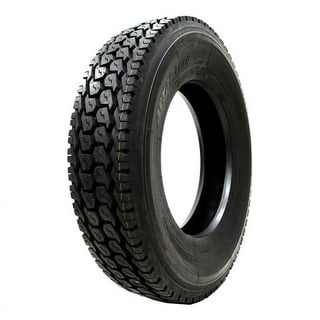Don't Miss Out on Mopar Tire Service Specials: Budget Friendly Upkeep Plans
Wiki Article
Tire Service: The Influence of Weather Problems
When it pertains to guaranteeing optimal efficiency and security on the roadway, recognizing the effect of weather condition problems on tire solution is crucial. From scorching heat to icy roadways, each climate component can dramatically affect tire performance and overall driving experience. By delving right into the results of differing weather problems on tires, motorists can obtain useful understandings that might boost their car's efficiency and long life. In this conversation, we will certainly check out the elaborate relationship between weather problems and tire solution, clarifying the value of weather-specific tire upkeep methods and factors to consider.Warm and Tire Efficiency
When exposed to heats, tires experience changes in efficiency that can considerably affect car safety and security and handling. The heat generated from long term driving or heat problems causes the tire rubber to soften, causing decreased walk life and increased wear. As the rubber ends up being softer, the tire's grasp when driving lessens, influencing stopping distances and overall traction. In severe instances, too much heat can also cause tire blowouts, posturing an extreme safety and security risk to the vehicle and its passengers.In addition, high temperature levels can increase the procedure of tire aging, triggering the rubber to weaken more swiftly. To minimize the results of warm on tire performance, motorists should routinely inspect their tire stress, revolve tires to ensure even wear, and check for any type of indicators of damages.
Cold Climate Effects
Cold weather condition conditions can have a significant impact on tire efficiency and safety. In cold weather, tires might additionally shed air pressure much more quickly, which can impact dealing with and fuel performance.
To minimize the results of winter on tires, it is vital to consistently examine tire pressure and inflate them to the manufacturer's advised degrees. Using winter or all-season tires designed for chilly weather conditions can additionally improve traction and hold on icy or snowy roads - tire shop morris. Proper tire upkeep, including regular examinations for wear and damage, becomes a lot more critical during cooler months to make sure optimal performance and safety and security
Rainy Conditions Influence
Tires with worn-out treads are extra susceptible to hydroplaning, where a layer of water builds up in between the road and the tire surface area, leading to loss of traction. To combat this, vehicle drivers must frequently inspect their tires for ample walk depth and think about investing in tires especially developed for damp problems.

Snow and Tire Security
Snow-covered roadways position one-of-a-kind challenges for vehicle drivers, emphasizing the value of proper tire choice and upkeep. When driving in snowy conditions, having the ideal tires can make a significant difference in safety and security and performance. Winter season tires are made with special rubber compounds and walk patterns to give better traction on snow and ice contrasted to all-season tires. The much deeper treads and sipes of winter season tires aid grasp the road better, minimizing the threat of moving and sliding.In enhancement to making use of winter tires, it is essential to ensure they are correctly pumped up. Winter can create tire stress to go down, influencing grip and handling (tire shop morris). Routinely checking and preserving the right tire stress is crucial for optimal efficiency in snowy problems

Weather-Related Tire Maintenance
When confronted with different climate condition, correct tire maintenance comes to be an important facet of car safety and security and performance. Weather-related tire upkeep encompasses a variety of methods focused on making sure optimal tire function and longevity in various weather condition scenarios. One vital element of weather-related tire maintenance is tire pressure guideline. Fluctuating temperatures can create tire pressure to vary, affecting grip and fuel efficiency. Consistently readjusting and examining tire pressure according to producer suggestions is essential for safe driving in altering weather. In addition, tire tread depth plays a considerable function in taking care of various weather elements. Tires with sufficient walk depth supply far better grasp on damp or icy roadways, lowering the threat of skidding or hydroplaning. Inspecting tire tread frequently and replacing tires when walk wear reaches a certain depth is important for maintaining traction and stability in adverse weather. By focusing on weather-related tire maintenance, chauffeurs can enhance safety, improve lorry efficiency, published here and extend the life expectancy of their tires.Verdict
In final thought, climate condition have a considerable impact on tire efficiency and safety. From warmth impacting tire stress and use to winter decreasing grip, it is important to consider the weather condition when maintaining and utilizing tires. Stormy conditions can lower grasp and cause hydroplaning, while snow can increase the danger of accidents if tires are not appropriately equipped. Weather-related tire maintenance is crucial in making sure optimal performance and safety and security when traveling.In this conversation, we will certainly explore the elaborate connection in between weather conditions and tire service, dropping light on the value of weather-specific tire upkeep techniques and considerations.

Report this wiki page